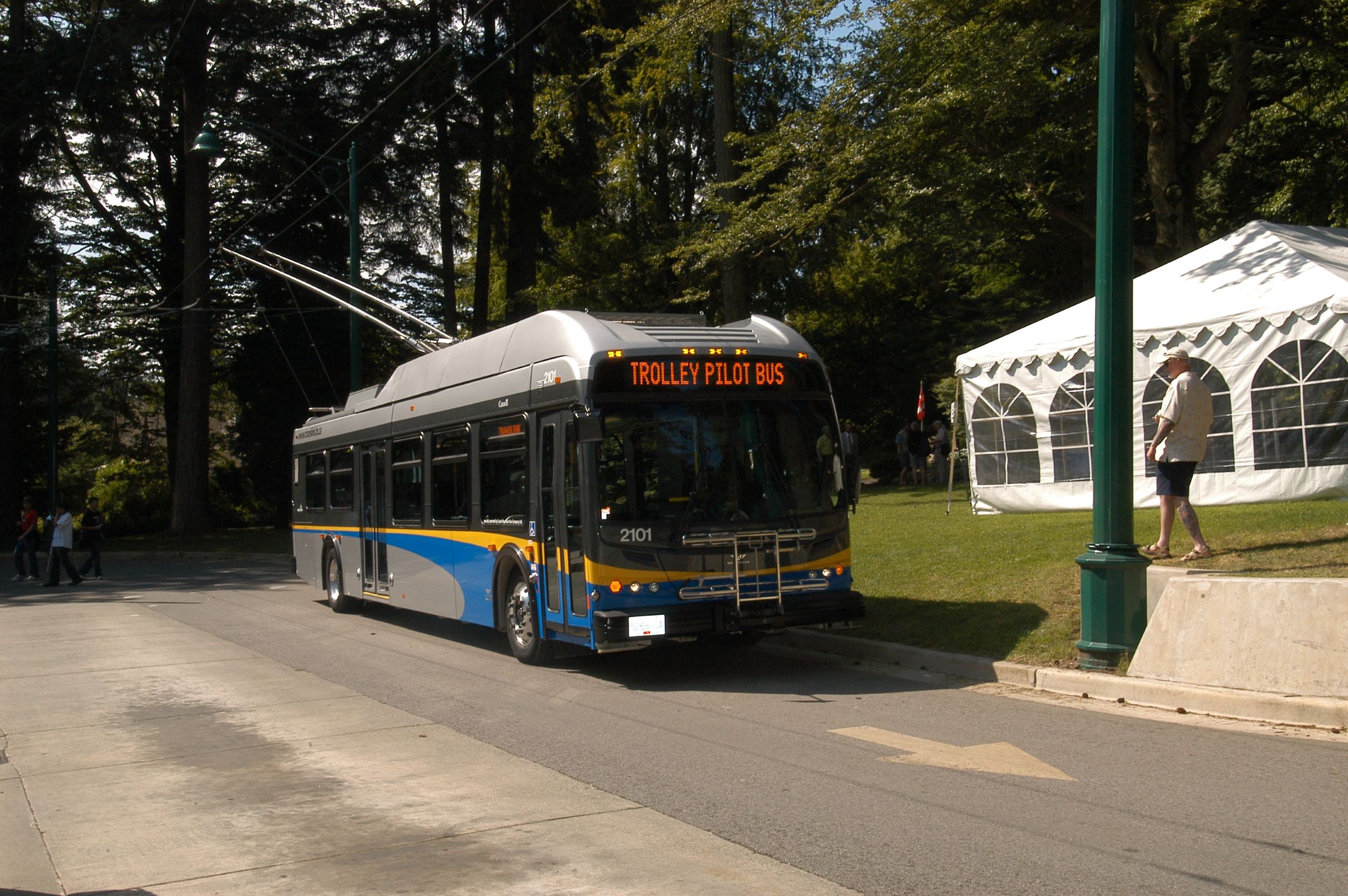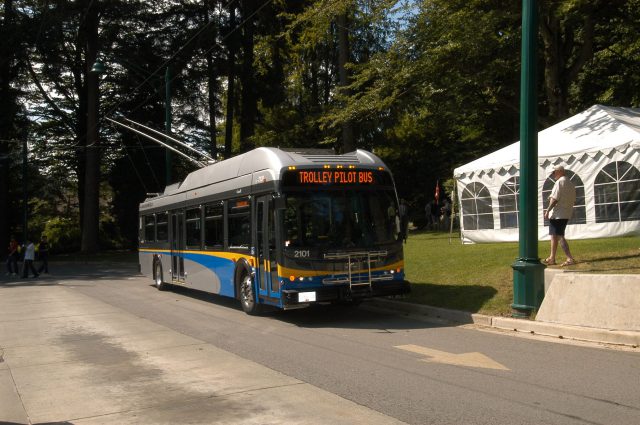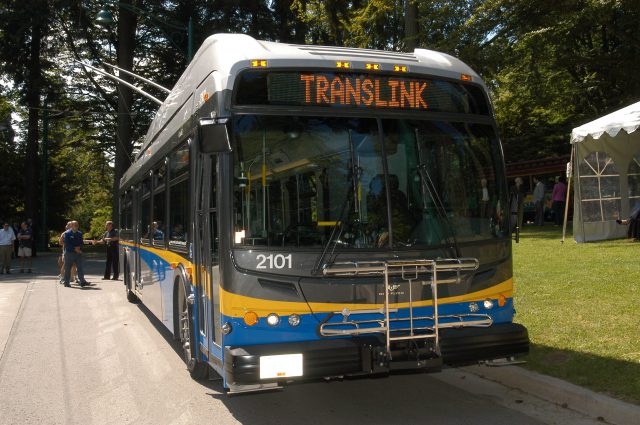15 years of the low-floor trolleybus in Metro Vancouver
15 years of the low-floor trolleybus in Metro Vancouver

Trolleybuses have been a part of Metro Vancouver’s transportation network for more than 70 years!
The very first was a Canadian Car Brill T-44 , which hit the roads on August 16, 1948, after the streetcar network was decommissioned in a “rails-to-rubber” conversion.
Like all other buses at the time, it was a high-floor bus, which meant you had to walk up a flight of stairs to board. As the fleet renewed and expanded over the years, they were all high-floor buses because the low floor, which is common today, didn’t exist.
It all changed on July 20, 2005 – 15 years ago – we were handed the keys to a prototype low-floor trolleybus at Stanley Park.
In the August 19, 2005 issue of The Buzzer, we wrote:
The new trolleys will be low-floor buses, making it easier for customers in wheelchairs and seniors to board the bus. In addition, a rear-facing wheelchair space has been designed so that wheelchairs and other mobility aids no longer need to be secured.
“It’s wonderful. The new trolley buses will provide me with access to areas of the city that have been inaccessible to me since I stopped driving my car,” said Lynn Meredith, a member of the Committee to Promote Accessible Conventional Transit.
“The seating for mobility aids is superb. There is so much more room to turn around compared with other buses,” added Meredith, who was among the first passengers to board the bus at a recent event in Stanley Park.
In addition, the trolleys will be bike-rack equipped, so cyclists are going to enjoy using them too.
It was the very first of New Flyer’s E40LFR model, built as part of a consortium with Kiepe Elektrik of Germany, who provided the electric propulsion system.
Coast Mountain Bus Company had placed an order a year earlier for 188 standard-length trolleybuses and 40 articulated – or bendy – trolleybuses. Since it was the first, the pilot bus was used to gather operating data and fine-tune specifications before the rest of the new trolleybuses start to roll off the assembly line in 2006.
Our trolleybus fleet today consists of 262 forty- and sixty-foot buses built by New Flyer, operating on 13 routes. We’re the only transit system in Canada that operates trolleybuses and our fleet is one of the largest in North America!








Are they going to order new trolleybuses to replace the current ones soon?
Not imminently since the current trolleybuses still have a number of years left before it’s time to retire them. TransLink’s Board of Directors and Mayors’ Council in 2018 approved the adoption of two significant environmental sustainability targets: reduce greenhouse gas (GHG) emissions by 80 per cent by 2050; and utilize 100 per cent renewable energy in all operations by 2050. In our Low Carbon Fleet Strategy, it was recommended the current trolleybuses be replaced in 2027-28 with new trolleybuses on page 9.
The PDF link you sent to him are not found, instead of deleting all documents, keep these news and documents in archives only.
Nice Article and good work
Are they going to order new trolleybuses to replace the current ones soon?
To Rakesh and Jacob: without wishing to usurp the editor’s role, it looks like there will be a new trolleybus fleet to replace the existing one. https://dailyhive.com/vancouver/translink-trolley-buses-electric-battery
But I would expect that the current fleet has at least another five years left. Trolleybuses can easily last 20 to 25 years in service.
Longer than that, even. When Toronto phased out its trolleybuses in the 1990s, they were using (heavily rebuilt) vehicles that had been introduced the 1940s! The outside body may rust (probably less of an issue in Vancouver) but the electric workings are extremely durable.
Wish 2101 still had its original configuration. I find that configuration better than the reconfiguration and the configuration on other buses in the fleet.